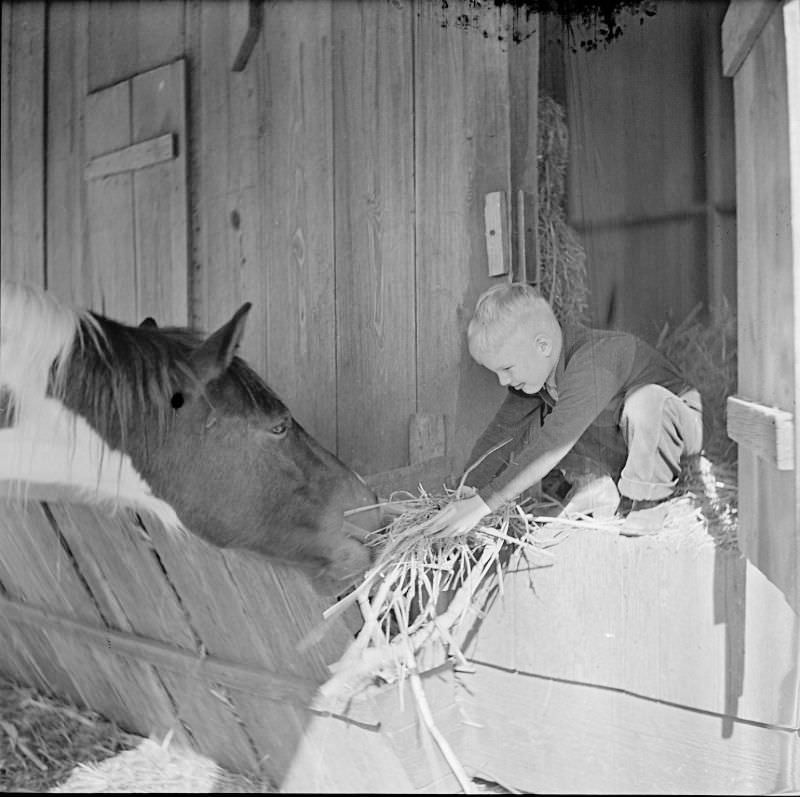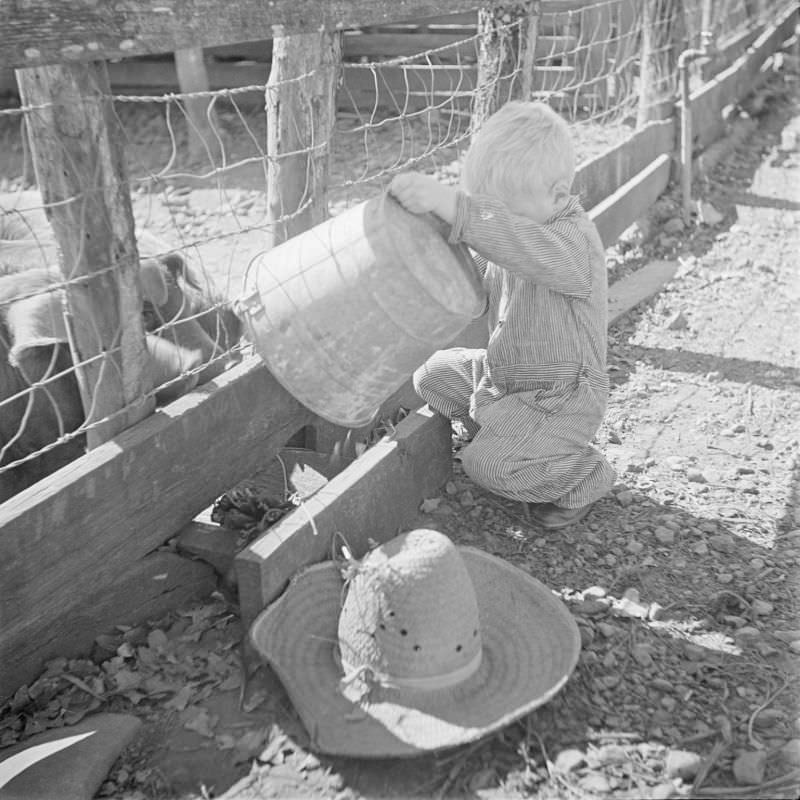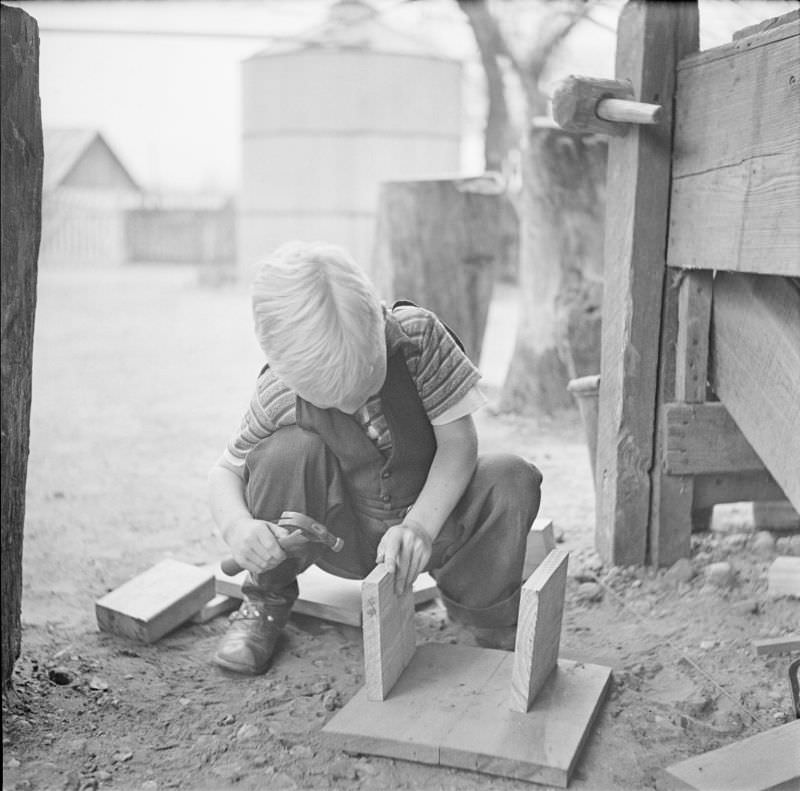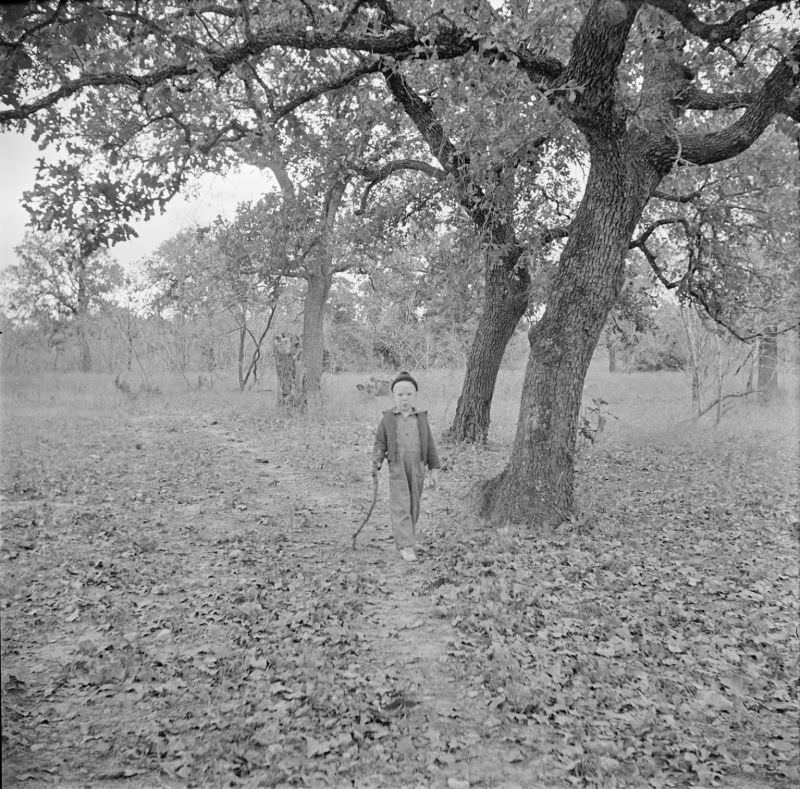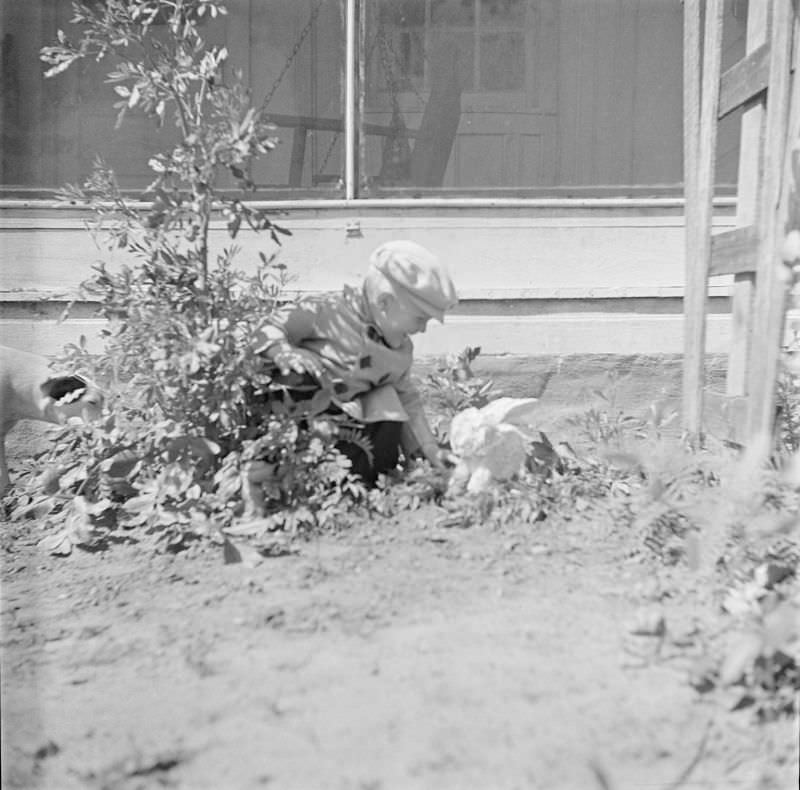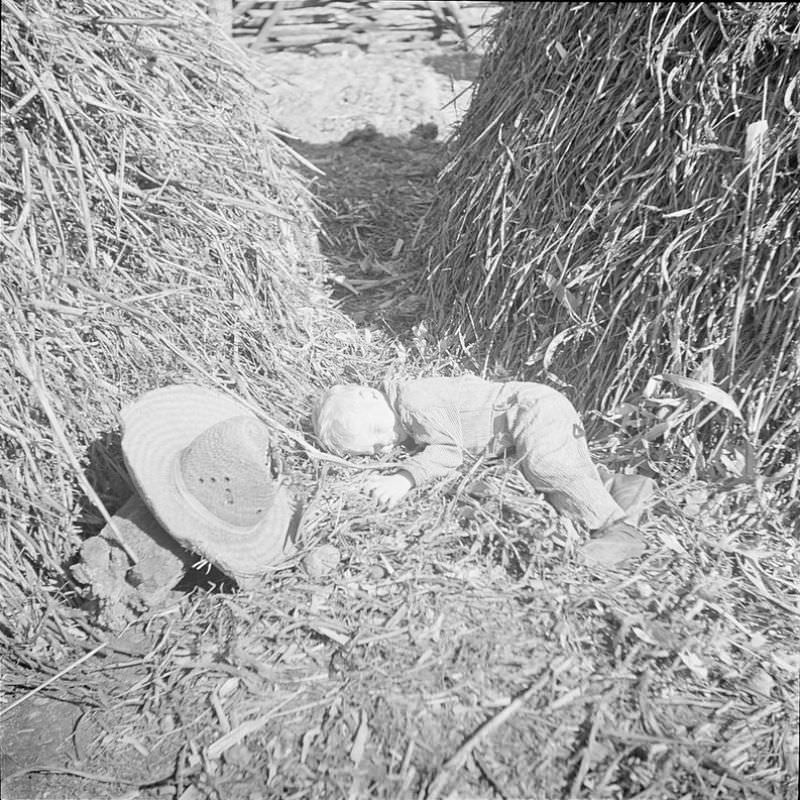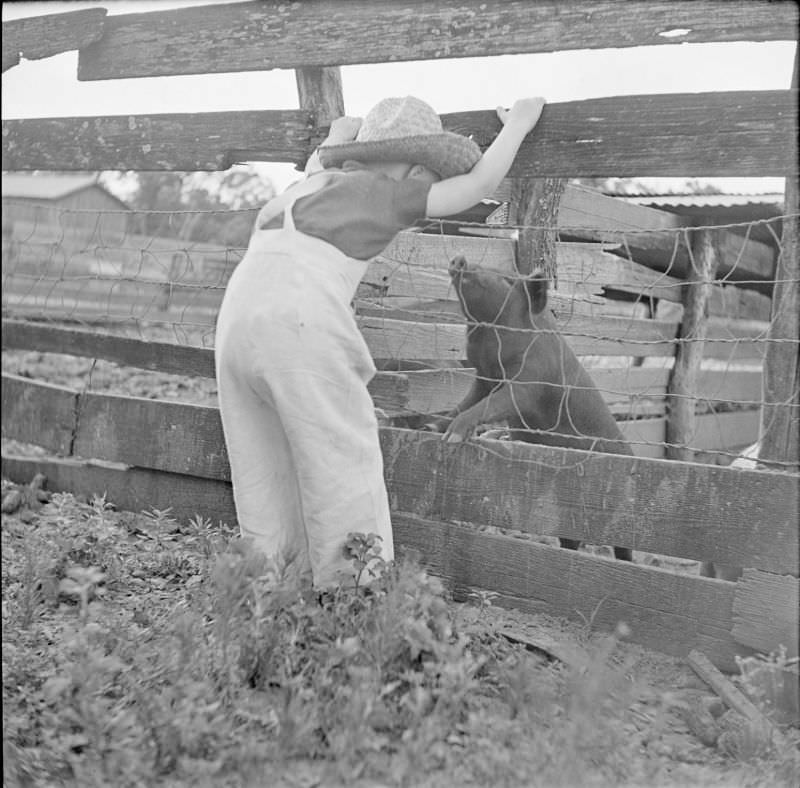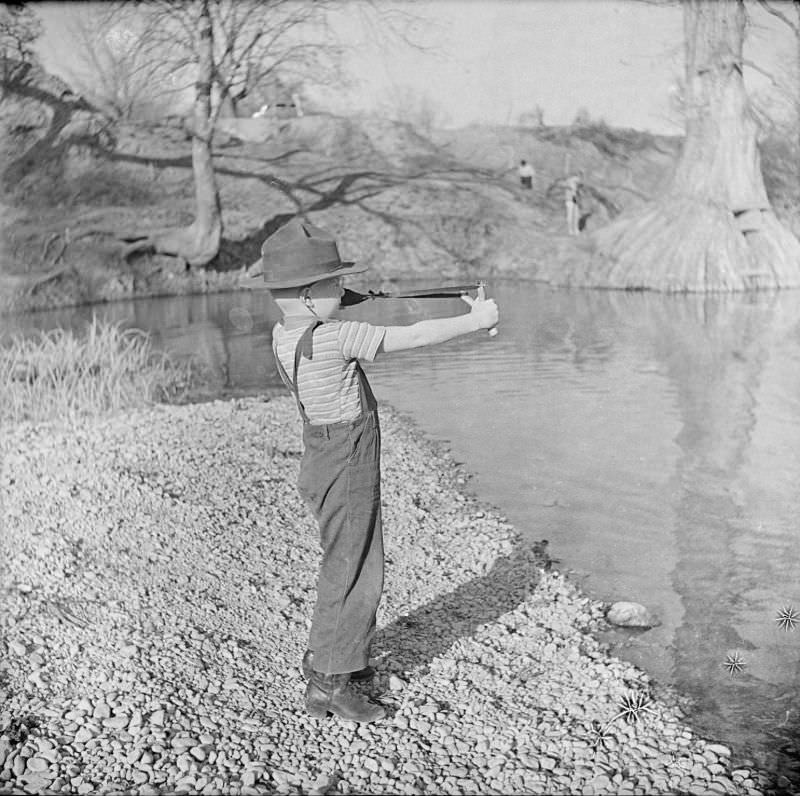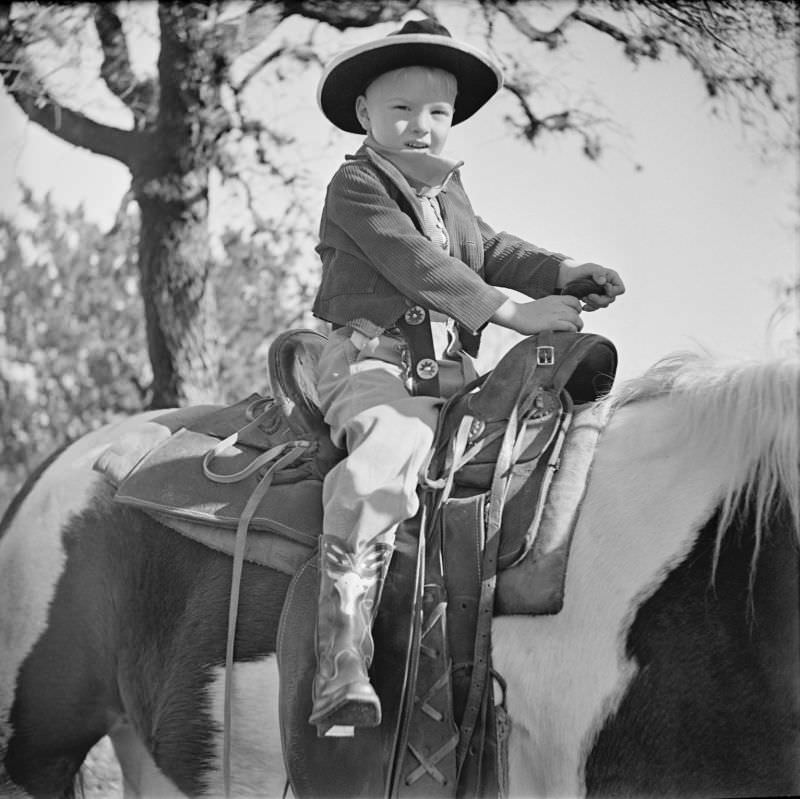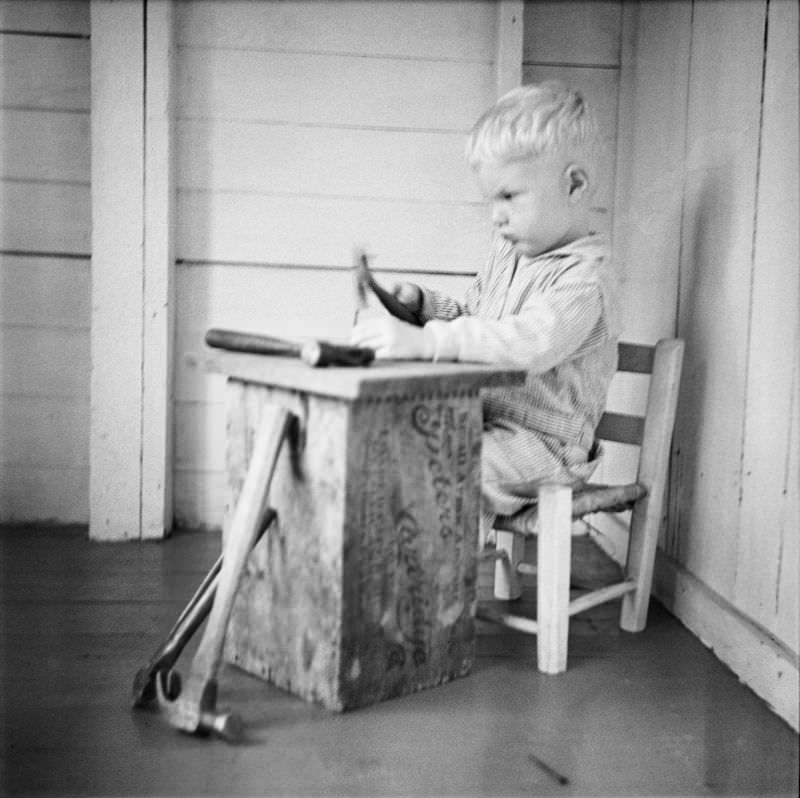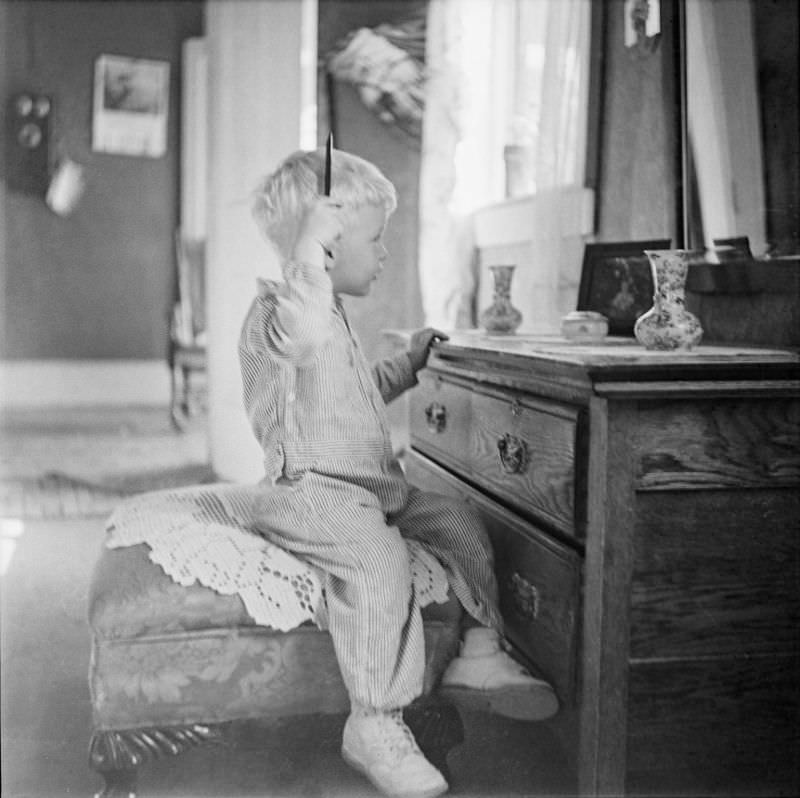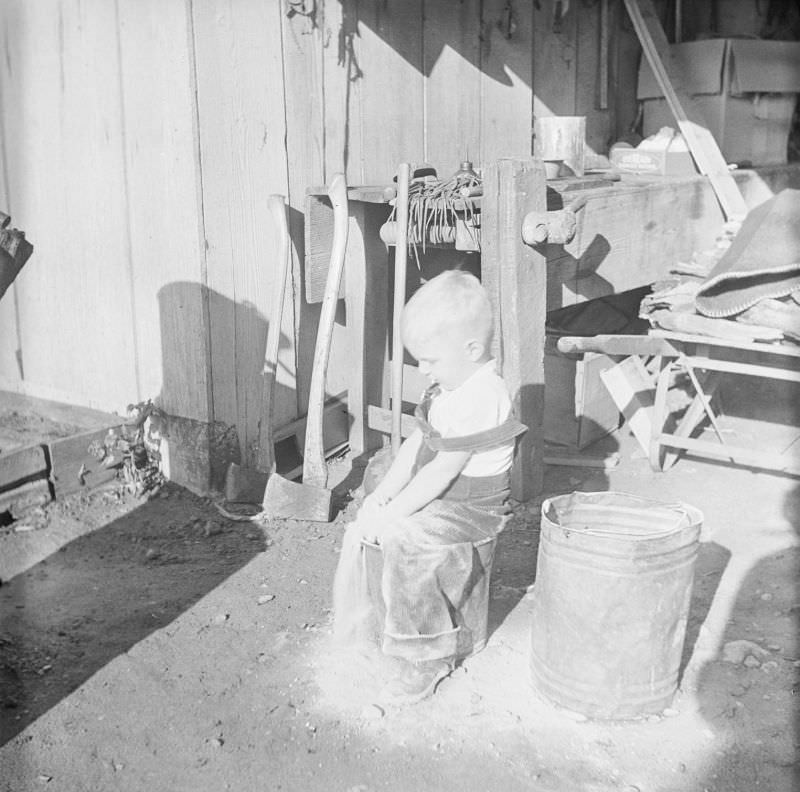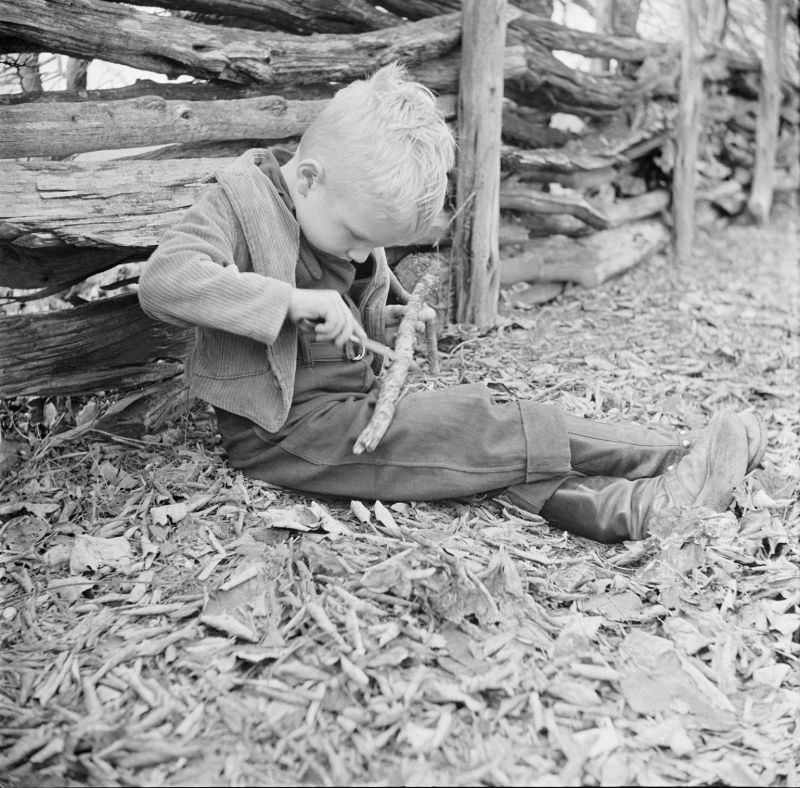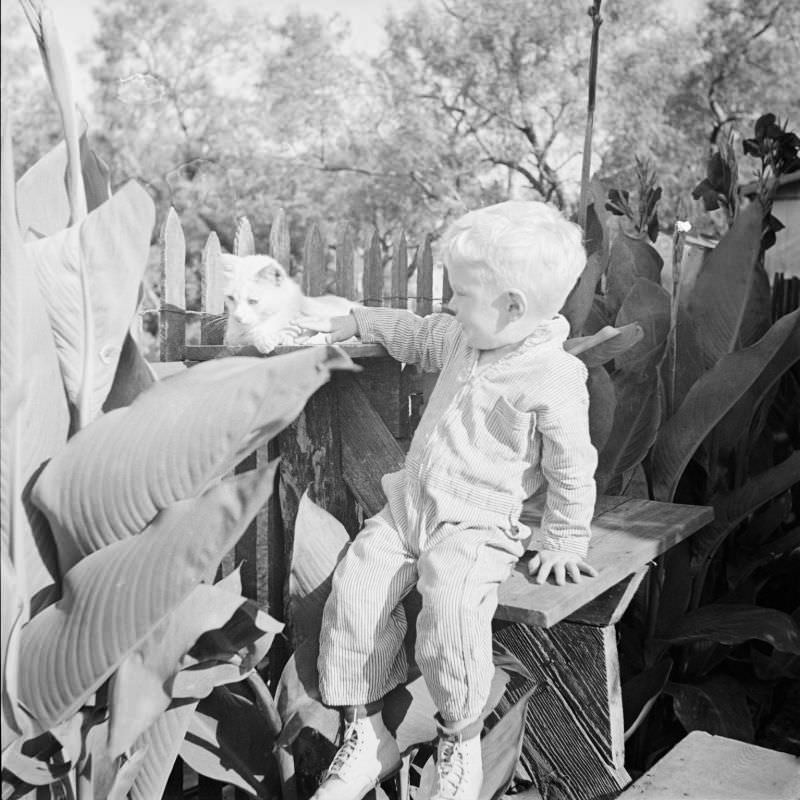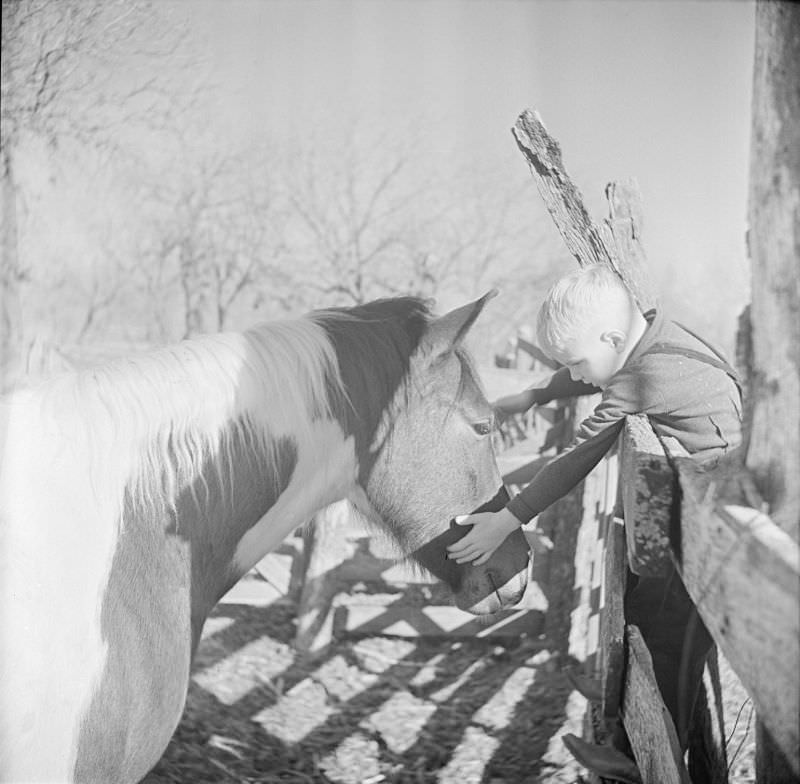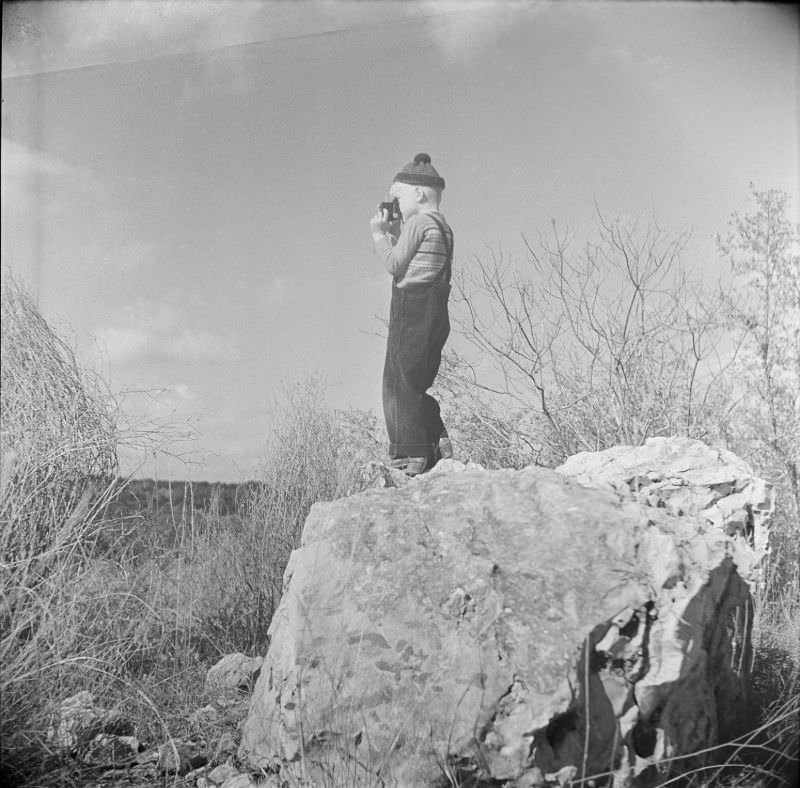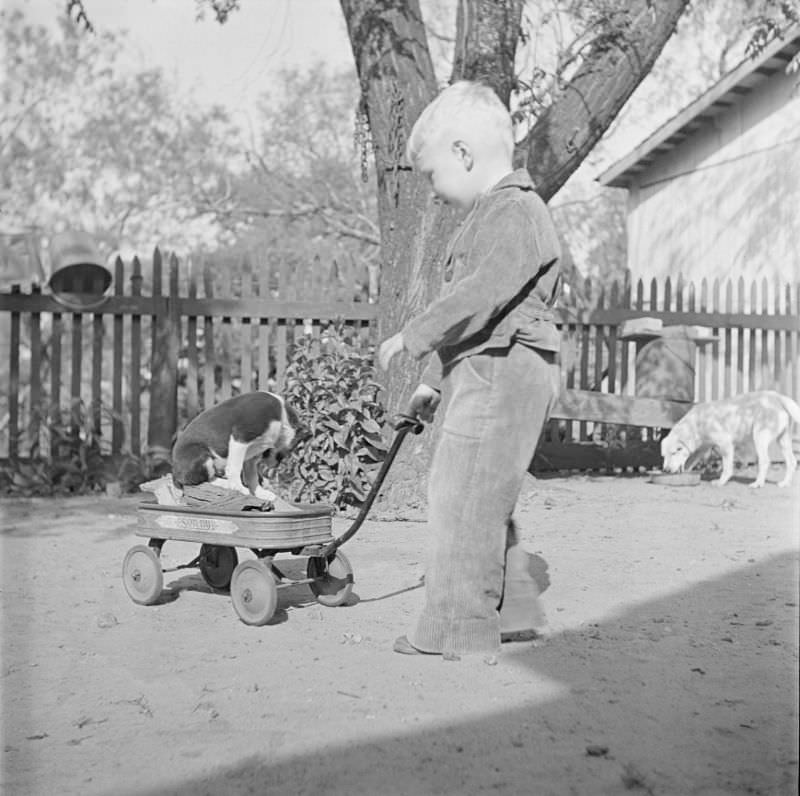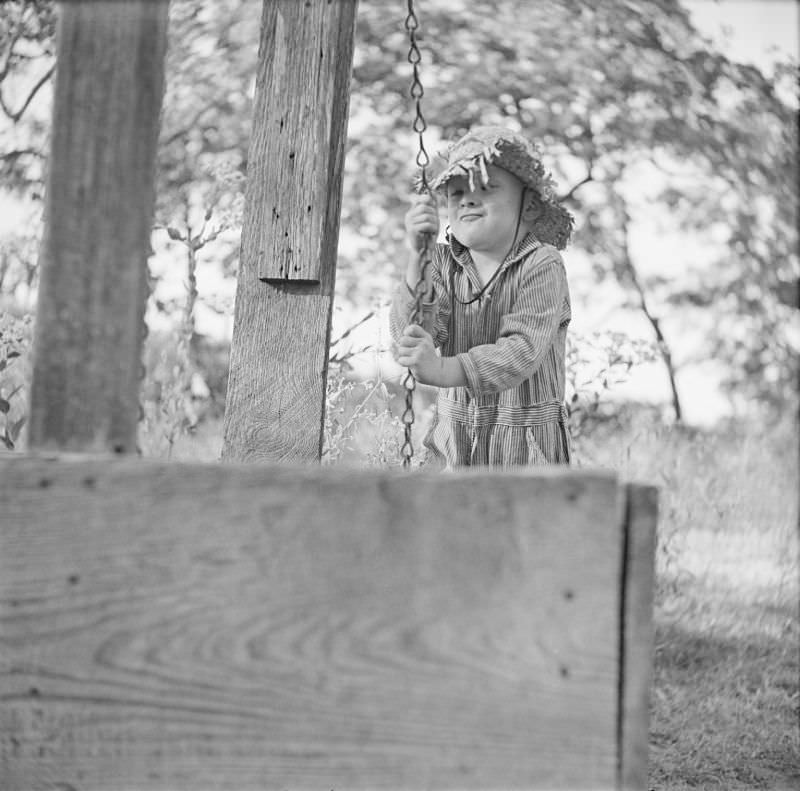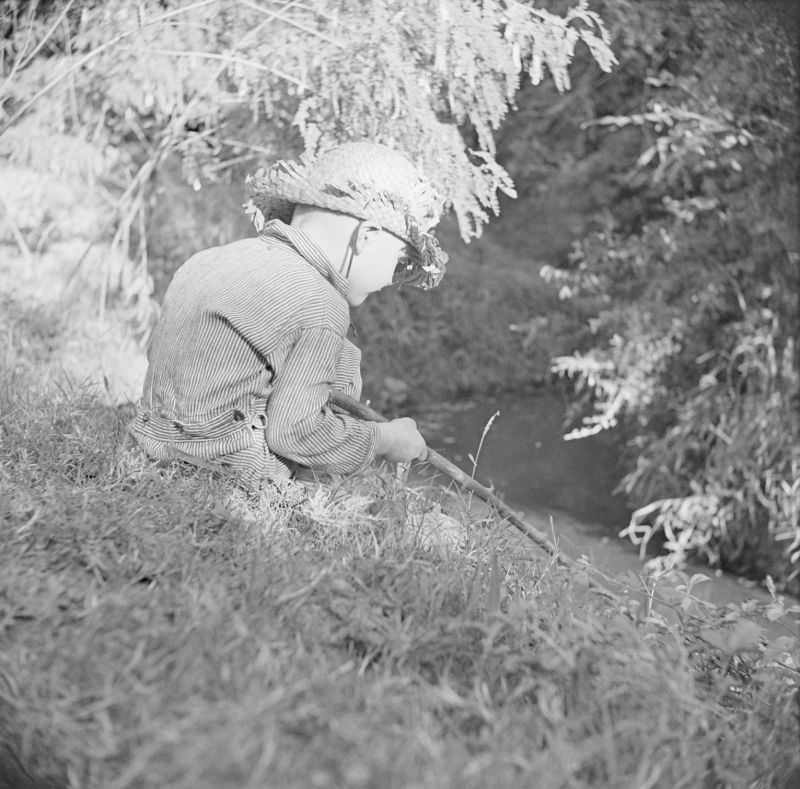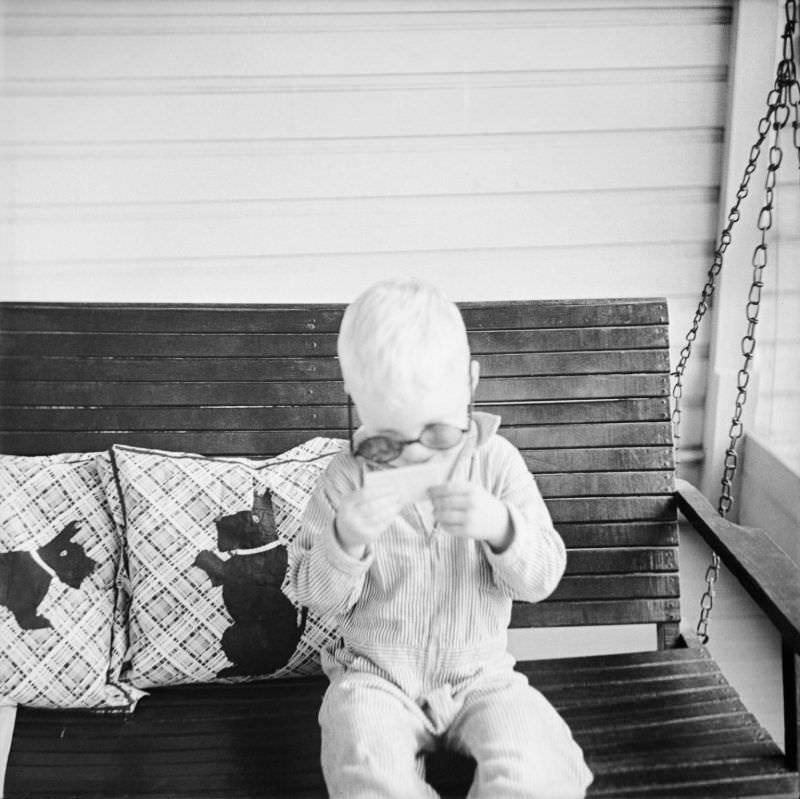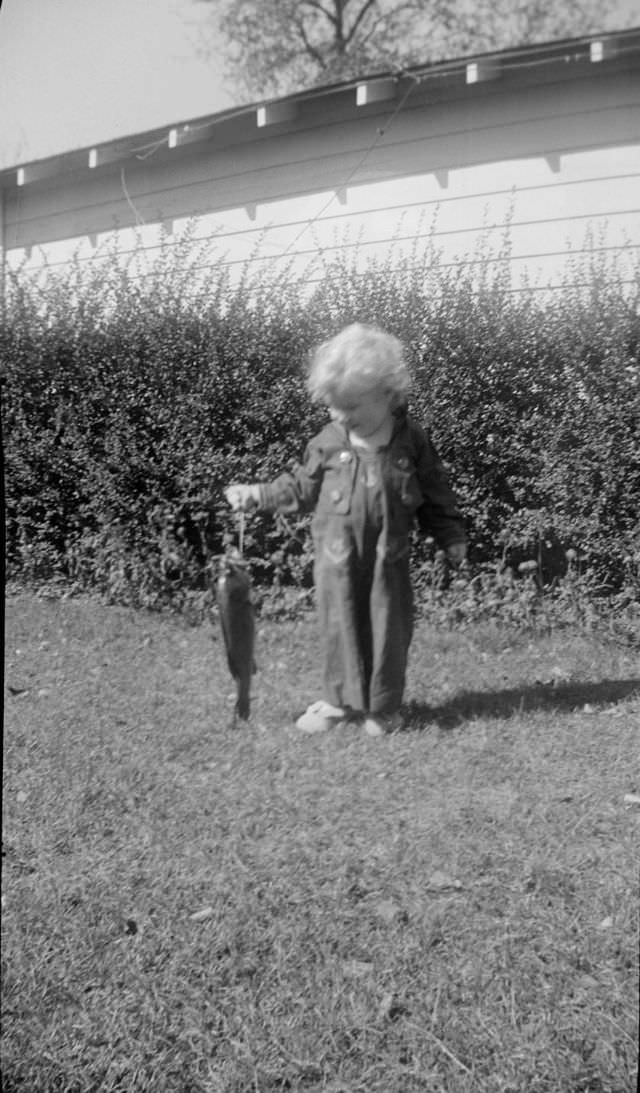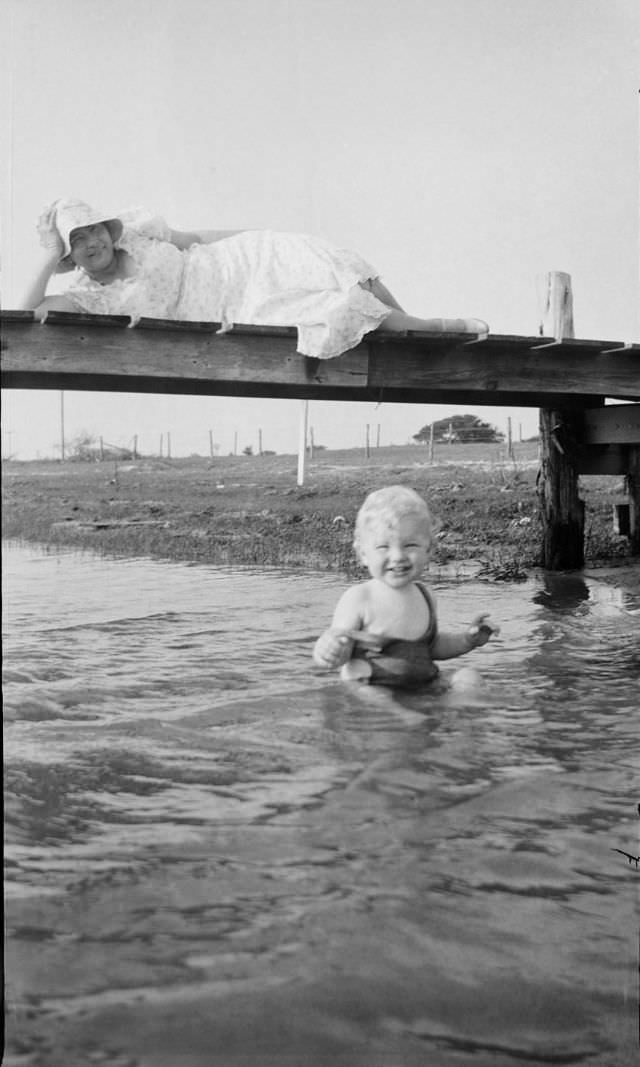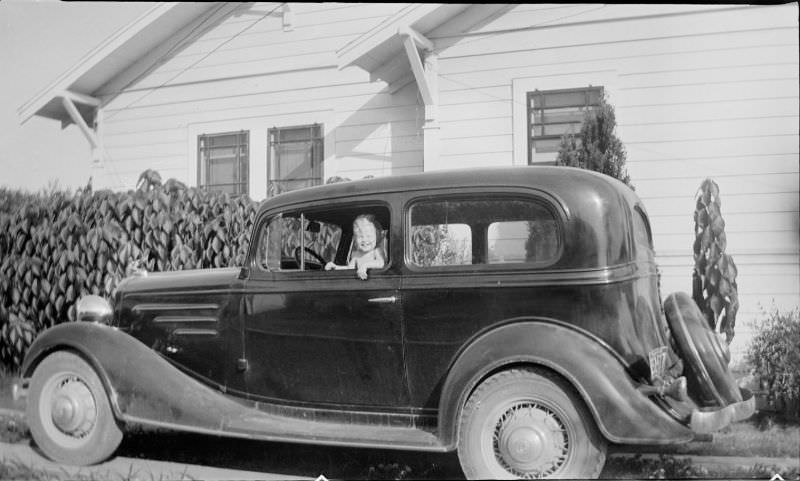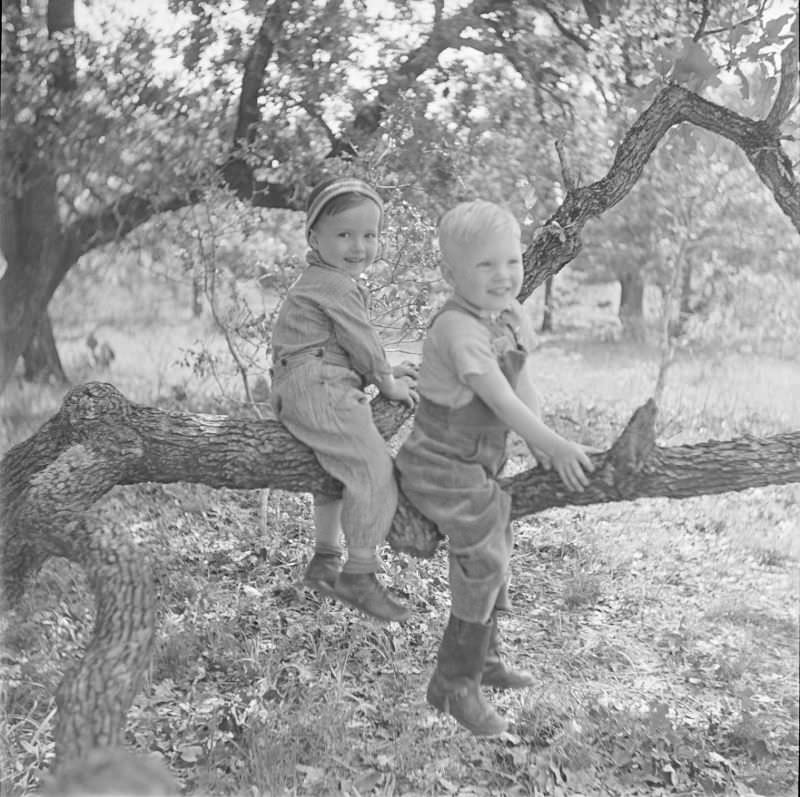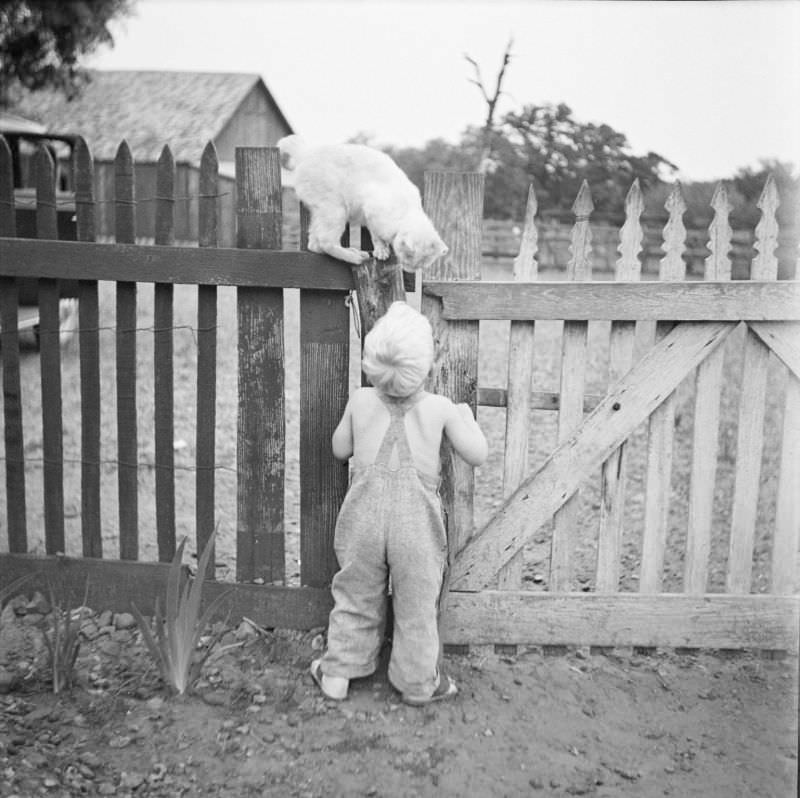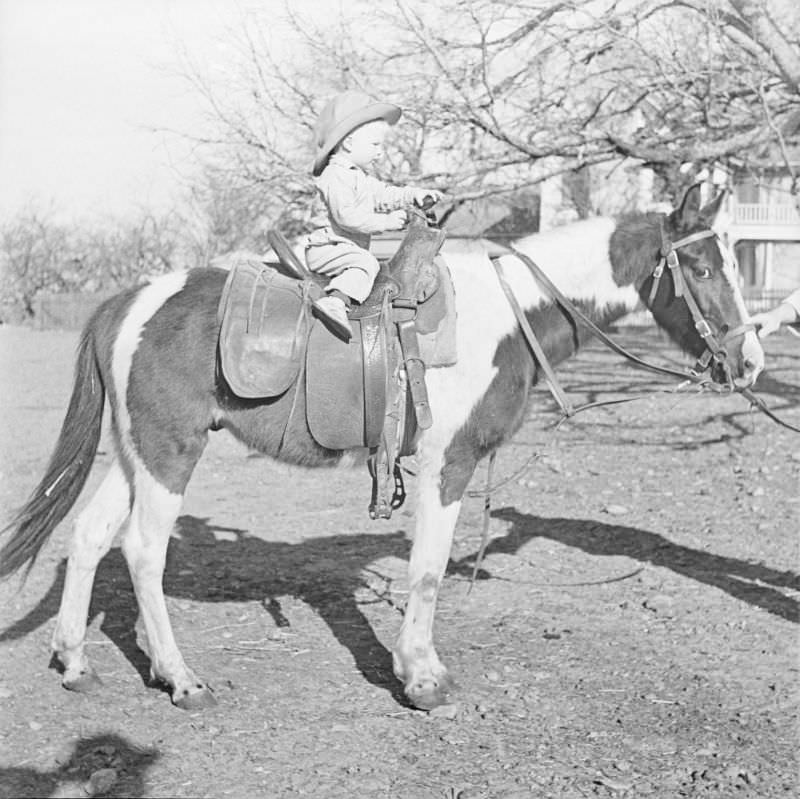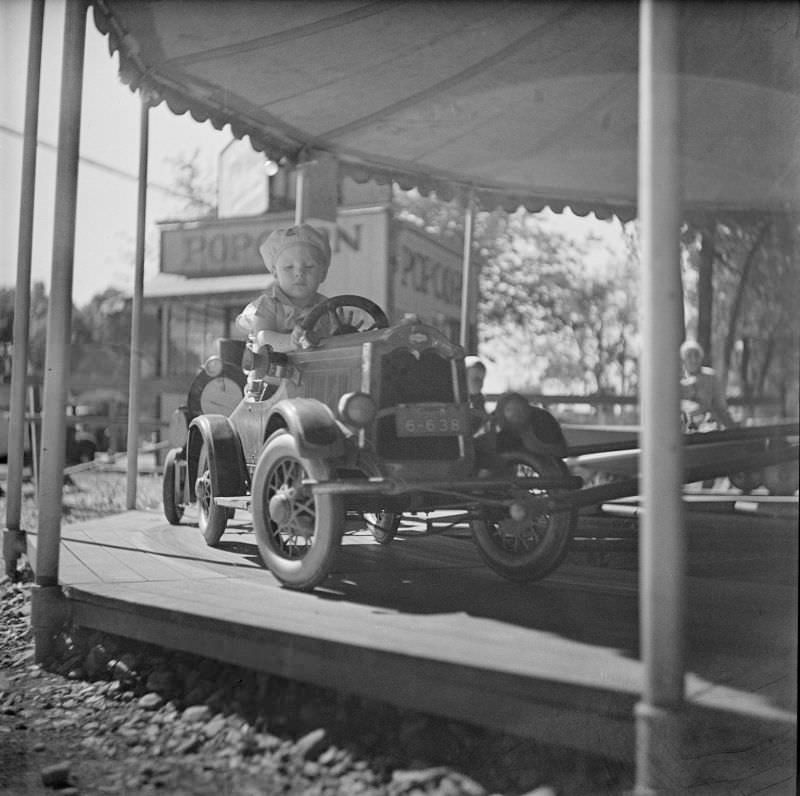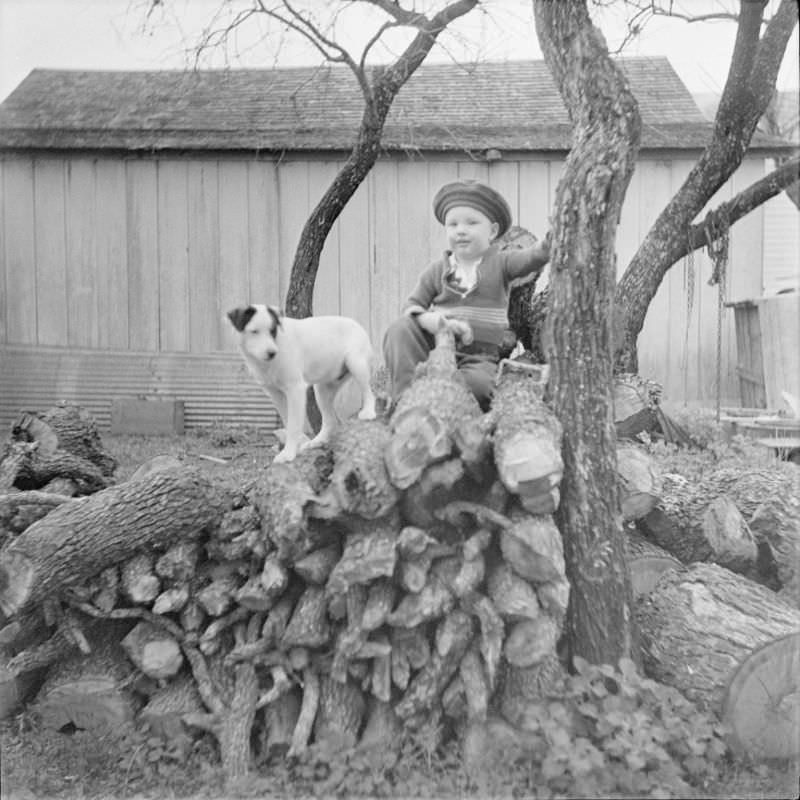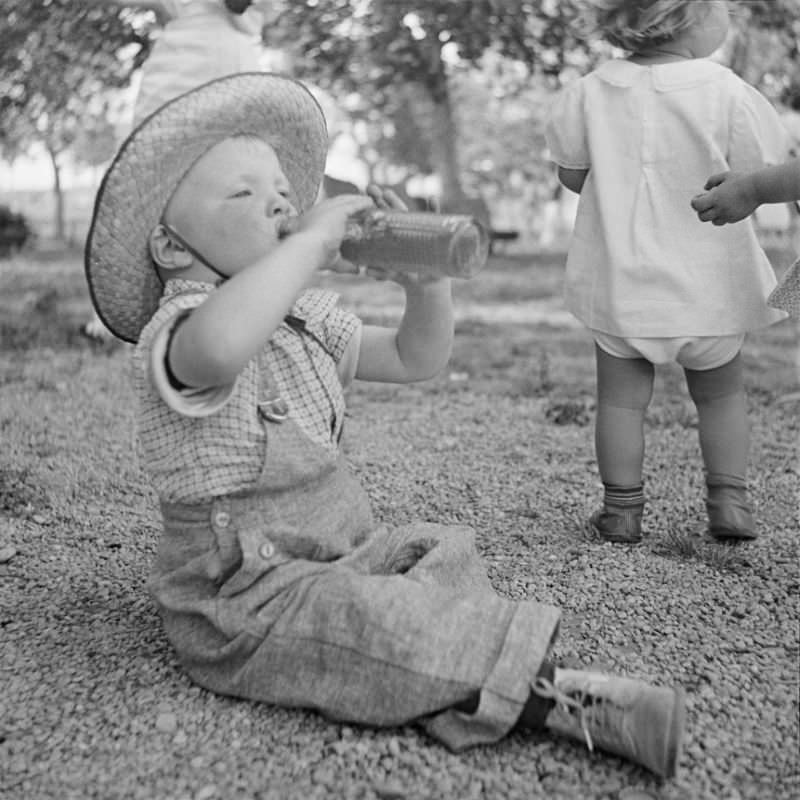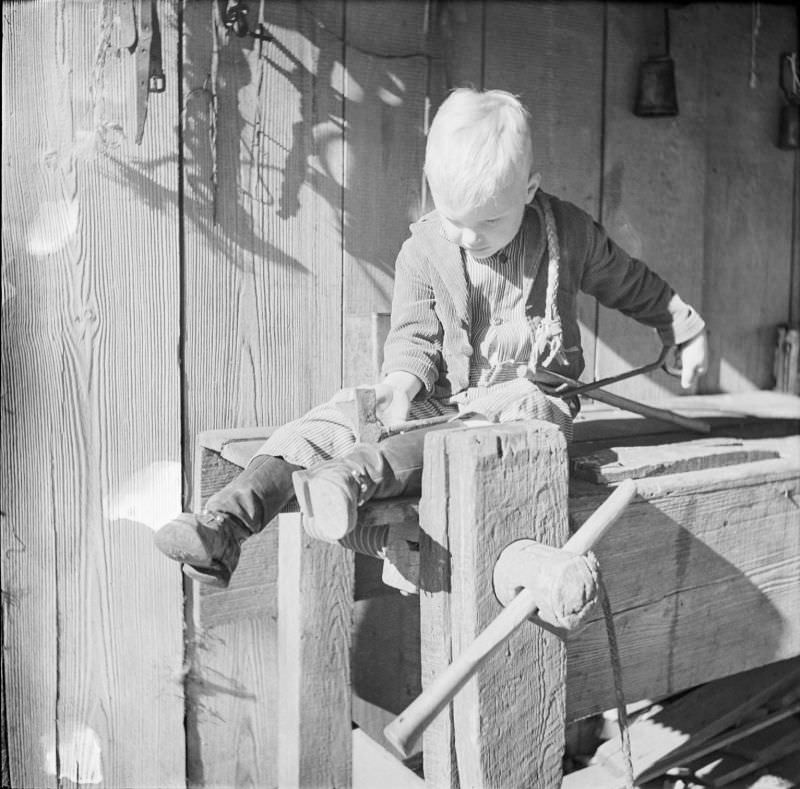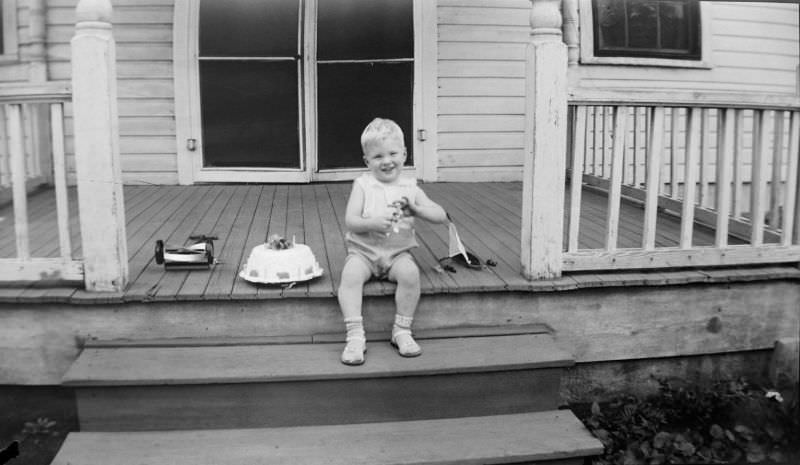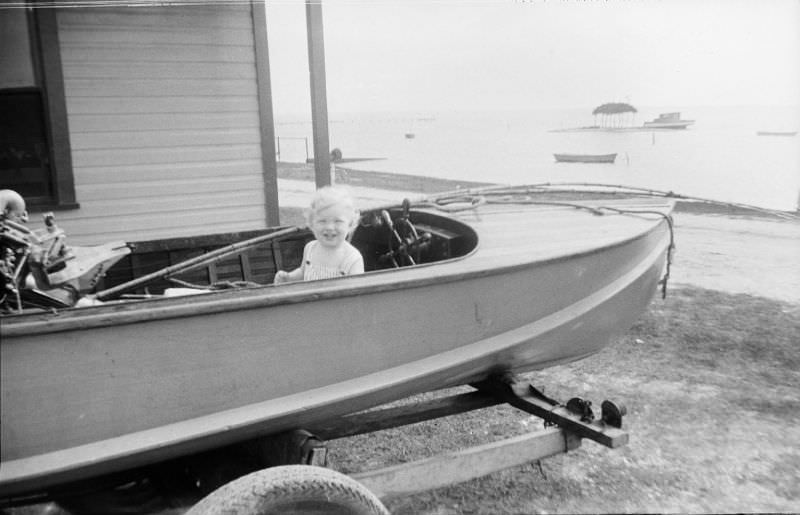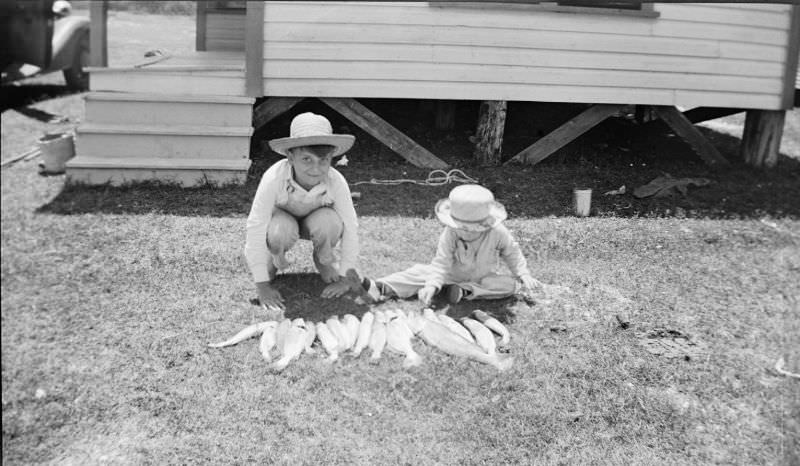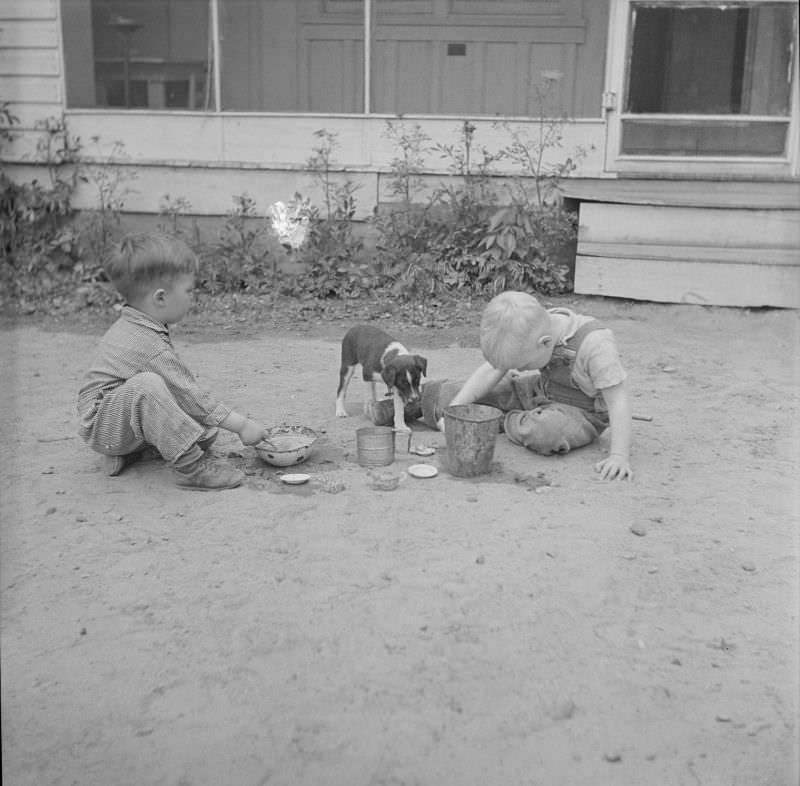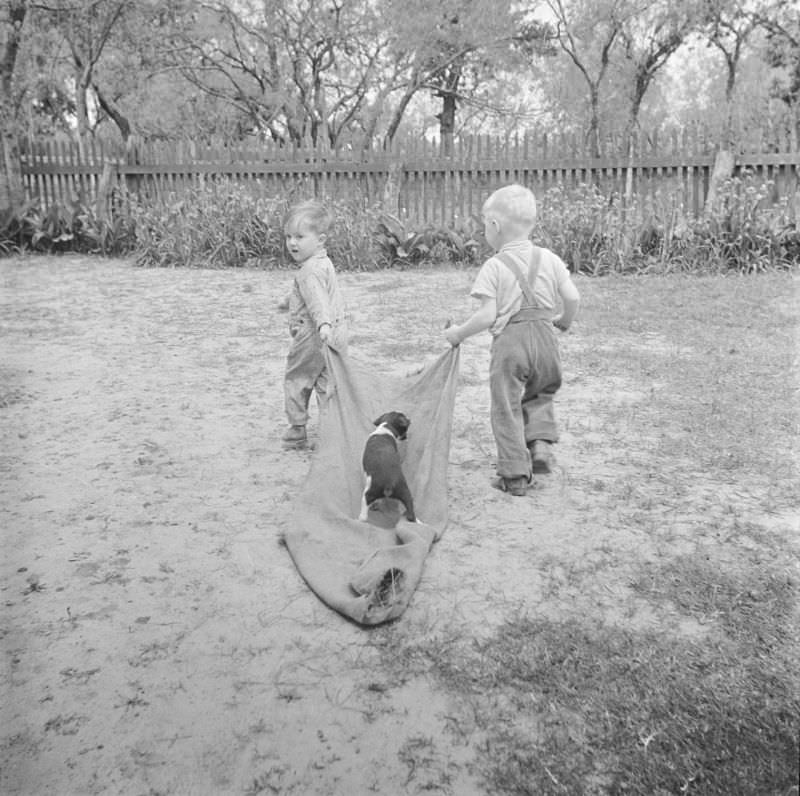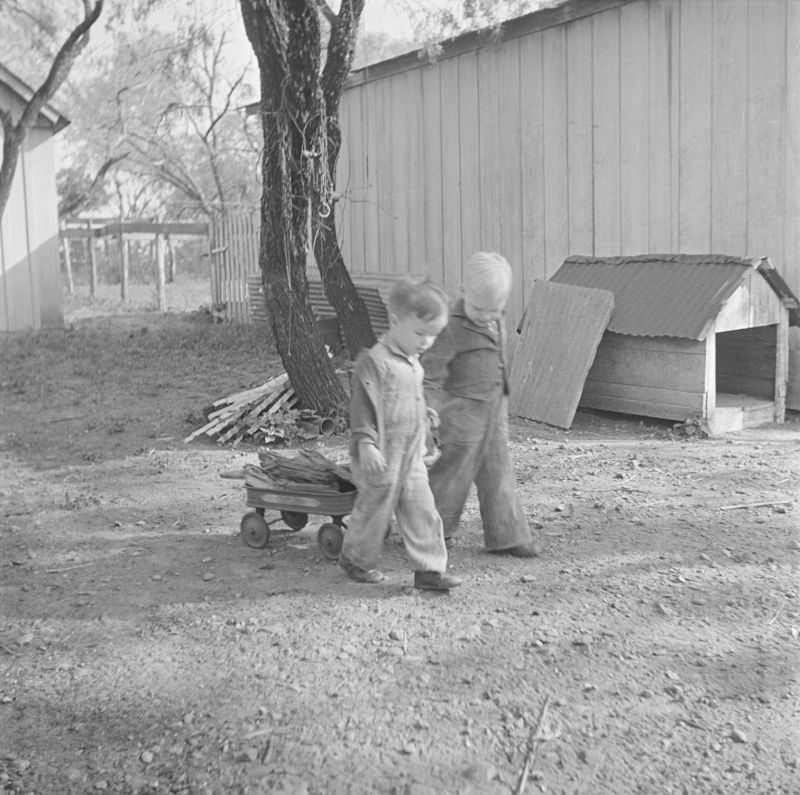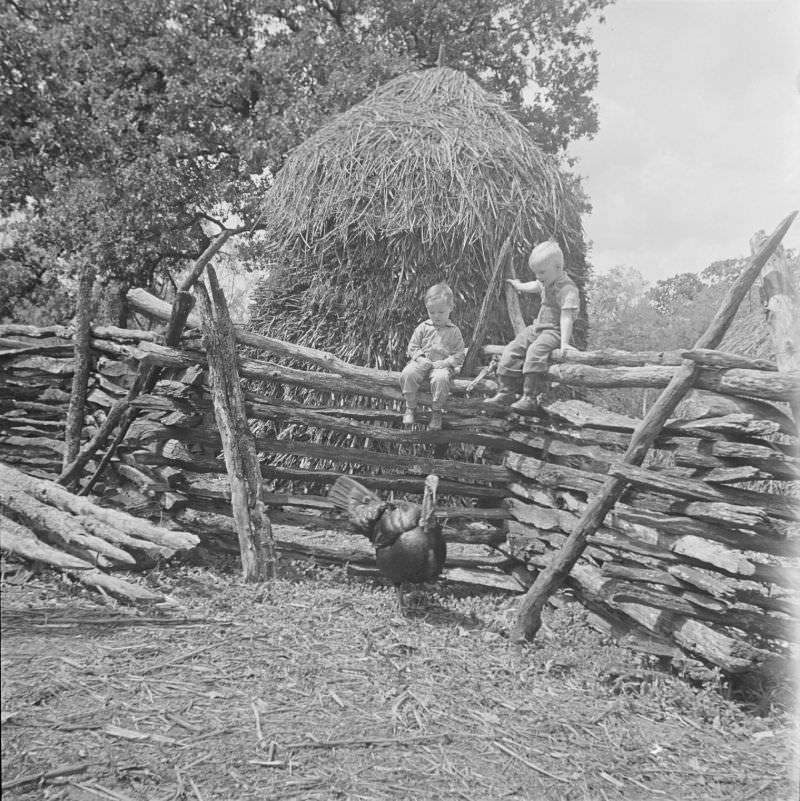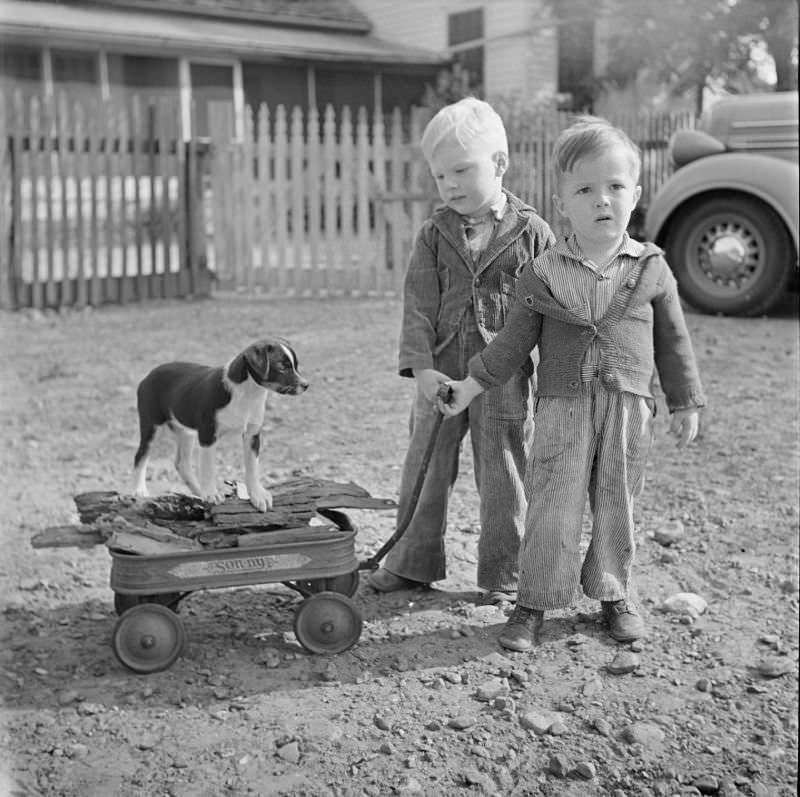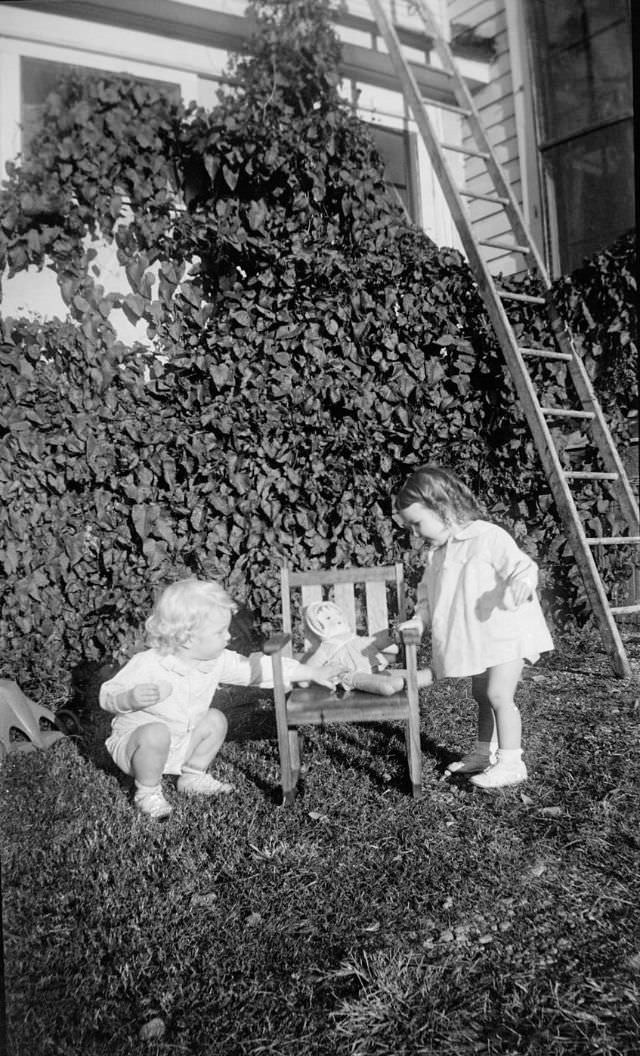The Great Depression caused hardship to many American children and their families during the 1930s. Often children were involved in household chores and helped with farm work from an early age. At the same time, some families enjoyed economic prosperity. There was mandatory education during the 1930s for all children between the ages of 5 through 14, after which most children went off to work or stayed at home to look after younger siblings. The children often spent time outside of school doing household chores, errands, and watching the family’s younger members. Students at grammar schools or those who were fee-paying could stay on until they were 18. A typical school day began at 9:00 am and ended at 4:00 pm. Smaller schools did not have table service, so in the winter, children would bring in a large potato to school in which their initials were carved to bake in the school coal oven.
The toys and games for children growing up in the 1930s were very simple. Since there were not many cars around, most children played on the streets. Whip and top were a favorite, although playing on a cobbled street could be tricky! Traditionally, tops were made from wood, but carrot and turnip tops were also useful. Hopscotch and skipping were fun; Double Dutch was a favorite, although it required long ropes. Kids often played outside after breakfast during weekends and school holidays and did not return until supper. The situation seems very dangerous to our modern eyes, as children were not supervised and their parents were often unaware of their children. However, most children escaped harm, except for a few bumps, bruises and grazed knees!
Listening to the radio on the wireless, playing games like Ludo and Snakes and Ladders, playing with toy trains, toy airplanes, and playing with dolls and dollhouses were also popular pastimes. Also, boys and girls can join the Cubs, Brownies, Boy Scouts, and Girl Scouts.


